Family : Balistidae

Text © Giuseppe Mazza

English translation by Mario Beltramini
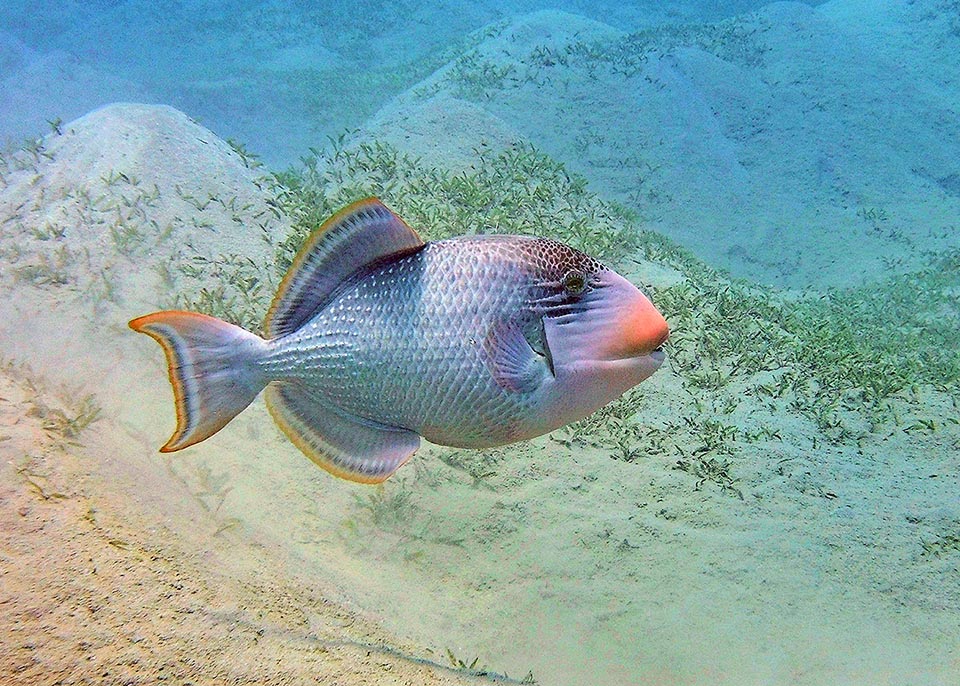
Even 50 cm long, Pseudobalistes flavimarginatus is present in the Red Sea and in the tropical Indo-Pacific between 2 and 50 m of depth © Karine Marangon
The unfamiliar Yellowmargin triggerfish (Pseudobalistes flavimarginatus Rüppell, 1829) belongs to the class of Actinopterygii, the ray-finned fishes, to the order of Tetraodontiformes and to the family of Balistidae, the triggerfishes.
The name of the genus Pseudobalistes comes from the Greek “pseudes” = false, similar in appearance, and from the Latin “ballista” = crossbow, the same etymology, then, as the genus Balistes.
It is, finally, a fish analogous to those of the genus Balistes.
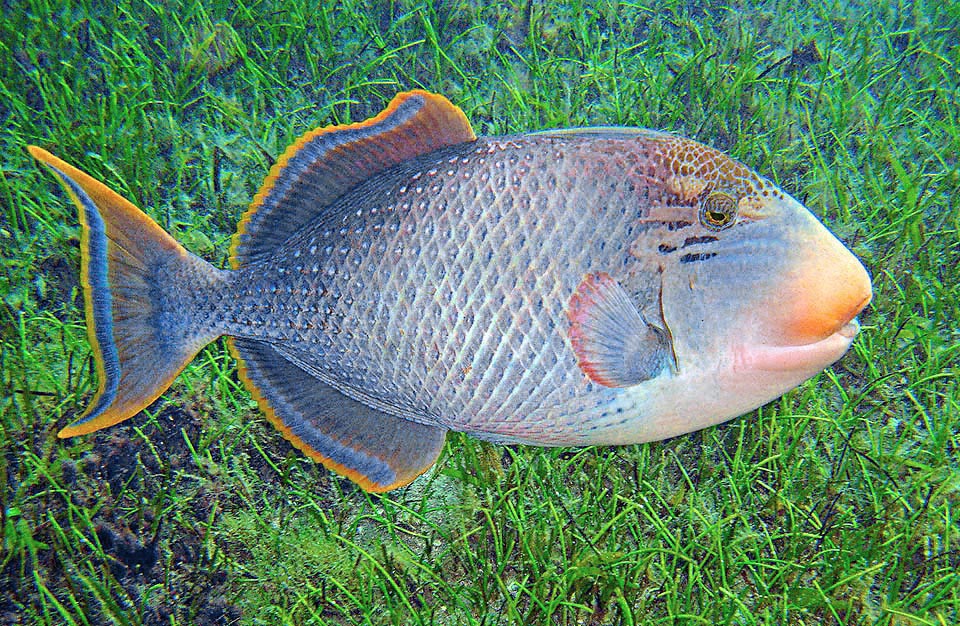
Overall the colour is pale. The fins of the adults have a characteristic yellow-orange edge, the mouth and the cheeks are scaleless and pinkish © Gianemilio Rusconi
The name of the species flavimarginatus means in Latin “with yellow margin”, with reference to the colour of the fish.
Zoogeography
Pseudobalistes flavimarginatus is present in the tropical waters of the Indo-Pacific. We find it, as an indication, along the African coast, from South Africa to the Red Sea, the Seychelles, Mauritius, Réunion and Maldives, in India, Australia, Indonesia, New Guinea, Micronesia, Philippines, Taiwan and southern Japan. Eastwards, it has colonized Samoa and the Tuamotu Islands archipelago. Southwards, it reaches Tonga Island.
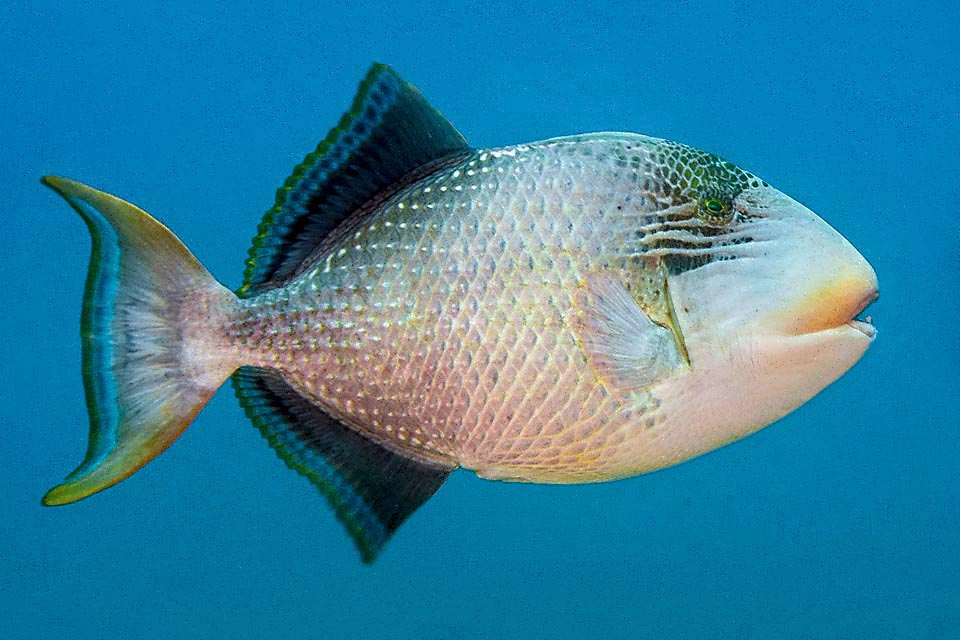
The pelvic fins are absent, fused in a sort of ventral spine visible only when the fish raises the first dorsal fin, the characteristic defensive dagger of the triggerfishes © François Libert
Ecology-Habitat
It lives in the madreporic formations up to 50 m of depth, but is often found also in shallow waters, in the estuaries and in muddy lagoons.
Morpho-physiology
Pseudobalistes flavimarginatus can be 60 cm long. The body is flat, ovoid, protected, as we would expect from the triggerfishes, by a coating of bony scales.
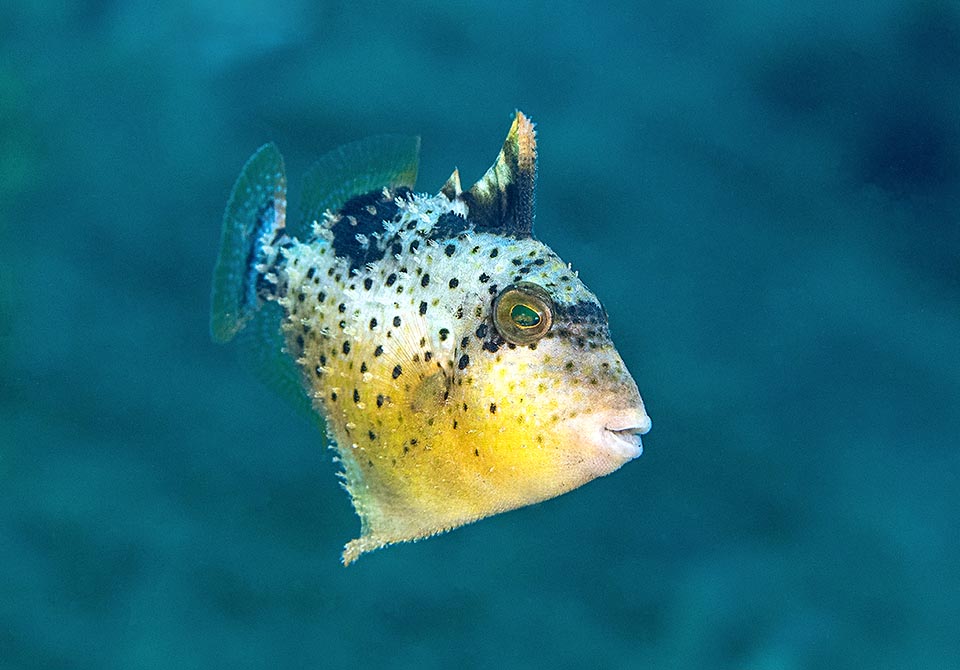
Vertically lockable even when dead, it is well visible in this young, in its first livery with the yellow belly, who does everything to appear bigger and not to be swallowed © Rafi Amar
The first dorsal fin is an erectile trigger formed by three spiny rays which the fish can block, for defence, in erect position.
Like all triggerfishes, it keeps armed also after the death, because the first spine, long and sharp, is embedded at the base of the second and it is necessary a voluntary movement of the third one for folding it in the appropriate lodging on the
A formidable deterrent for the jaws of the predators, which may get injured while swallowing the fish, and a way for finding safe shelters. It is sufficient, in fact, to choose as den a cavity with a narrow door, where it can enter only with lowered fin. Once inside, the fish opens the rigger and can stay safe and calm, sure of not being carried out by the currents while sleeping or resting.
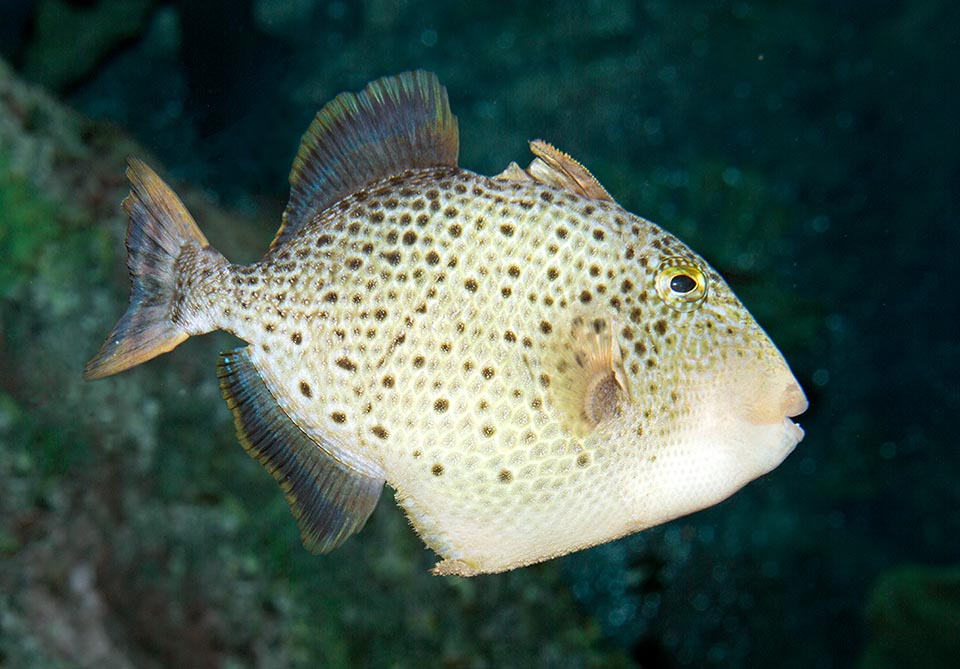
Also this bigger specimen looks fearful. The yellow ventral and the blue dorsal with black bands have disappeared and the characteristic mimetic dotting is shown © Giuseppe Mazza
The second dorsal fin counts 24-27 soft rays and is almost specular to the anal which has 22-25 of them. The pectoral ones have 15-16 unarmed rays, the ventral are reduced to a protuberance and the caudal, rounded in the juveniles, becomes than truncated with elongated lobes in the adults. The cheeks have no scales and the mouth, small but robust, shows solid incisors for breaking madrepores and shells.
In the whole, the livery is faded. The juveniles have yellow belly with black or blue spotting and white back with black bands. Then they get greenish with black small spots and finally the adults exhibit, as the Latin name of the species recites, a showy yellow-orange margin on the edge of the fins whilst the spotting disappears and the scales grow up showing a regular relief.
Ethology-Reproductive Biology
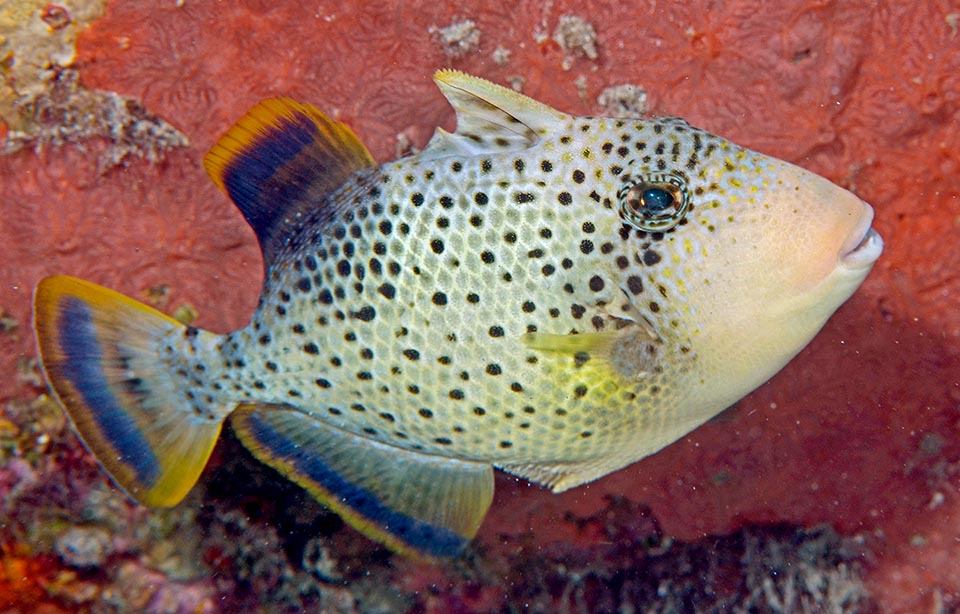
Then dotting gets thickens and the border of the fins that has given the fish the name begins to turn yellow © Benoit Lallement
The Yellowmargin triggerfish nourishes of benthic invertebrates such as sea urchins, crustaceans, molluscs, tubeworms and polyps but also of sea weeds.
The laying occurs in little deep channels with sandy bottom where the tides of the reefs pass. The males reach them several days before the females, share the territory and dig, with jets of water from the mouth, nests even 2 m wide and 70 cm deep.
This is their way to get their attention and these, chosen the partner, lay even 430.000 eggs stuck together in a spongy mass of about 10 cm placed in the nest bottom and burdened by fragments of coral rubble so as not to be dispersed by the currents.
The female cares for the eggs, ventilating and cleaning them until they hatch, and both parents stand guard at the nest.
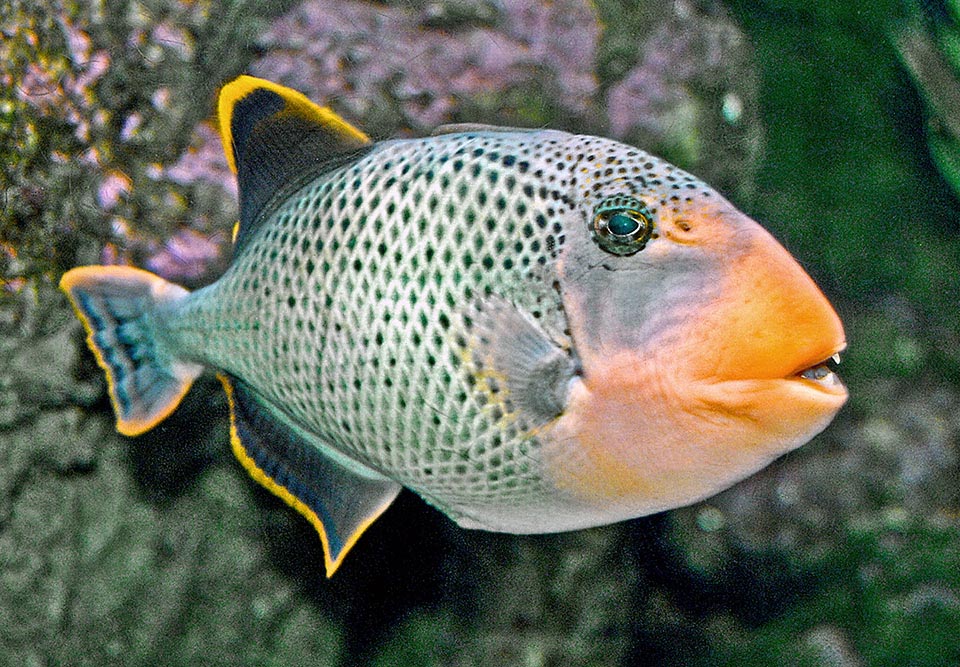
Here we are close to adults’ livery. Yellowmargin triggerfish eats echinoderms, crustaceans, shells and corals, it crushes with its strong jaws, but also tunicates and algae © Ettore Balocchi
Pseudobalistes flavimarginatus is accidentally fished and consumed fresh or dried by the local populations, regardless of the ciguatera risk, a severe food poisoning mainly due to its herbivorous feeding that may include poisonous algae.
The fishing vulnerability index is moderate, marking only 29 on a scale of 100 and the resilience is good with a possible doubling of the populations in less than 15 months, but the Red List biologists, not knowing the numerical trend of the populations, presently survey the species, considered “Least Concern”.
Synonyms
Balistes flavimarginatus Rüppell, 1829.
→ For general information about FISH please click here.
→ For general information about BONY FISH please click here
→ For general information about CARTILAGINOUS FISH please click here.
→ To appreciate the BIODIVERSITY of BONY FISH please click here.
→ To appreciate the BIODIVERSITY of CARTILAGINOUS FISH please click here.
